This article was medically reviewed by Luba Lee, FNP-BC, MS. Luba Lee, FNP-BC is a Board-Certified Family Nurse Practitioner (FNP) and educator in Tennessee with over a decade of clinical experience. Luba has certifications in Pediatric Advanced Life Support (PALS), Emergency Medicine, Advanced Cardiac Life Support (ACLS), Team Building, and Critical Care Nursing. She received her Master of Science in Nursing (MSN) from the University of Tennessee in 2006.
There are 7 references cited in this article, which can be found at the bottom of the page.
wikiHow marks an article as reader-approved once it receives enough positive feedback. This article received 24 testimonials and 87% of readers who voted found it helpful, earning it our reader-approved status.
This article has been viewed 574,462 times.
Catarrh occurs when there is a buildup of mucus in the nose, throat, or chest, caused by inflammation of the mucus membranes. This buildup of mucus is how your immune system responds to an infection. Causes of catarrh vary, but it can generally be treated at home. Things like nasal rinses and warm water can be used to combat catarrh. If you can't treat your catarrh yourself, seek medical help. A doctor can help you identify underlying causes and prevent a reoccurrence.
Steps
Getting Rid of Catarrh At Home
-
1Take sips of warm water. Dehydration can make catarrh worse. You should sip water throughout the day. This can help loosen mucus in the throat, lessening your symptoms. Opt for warm water, as this will warm your throat slightly and help to loose up the mucus.[1]
- Sipping water can help ease symptoms like itchiness, which you may be tempted to deal with by cleaning your throat. Clearing your throat can actually make catarrh worse, so sip water when you feel the temptation to clear you throat.
- Carry a water bottle with you at all times. This way, if you want to clear your throat, you can quickly sip water instead.
- Keep a water bottle with you at school or work. Make sure to drink water with meals.[2]
-
2Use a saline nasal rinse. You can buy a saline nasal rinse at most pharmacies and drug stores. You can also buy one from your doctor. You can also make one at home by placing half a teaspoon of salt in a pint of water. Let it boil and then use the water when it's cold.[3]
- Usually, you use a small suction device with a bulb on the end to draw the nasal saline spray in. You then insert the tip of the device into your nose and squeeze the bulb to release the spray.[4]
- You then breathe in through your mouth. The solution should come out the opposite nostril. You can blow your nose to get rid of any remaining solution.
- This does not work for everyone. If your symptoms worsen using decongestant sprays, talk to your doctor about other medications to explore.
Advertisement -
3Inhale steam. Boil water and then inhale the steam, as this may help loosen mucus in the back of your throat. It can help to add a small amount of menthol crystals or eucalyptus oil to the water. Make sure not to place your face too close to the pot, as you want to avoid getting burnt.
- Young children should not use this method.
-
4Try oil-pulling with coconut oil. Oil-pulling is one of the best ways to get rid of catarrh. To do oil-pulling, put about a tablespoon of coconut oil in your mouth and swish it around for about 10 to 15 minutes. Then, spit out the oil. Repeat this once daily.
-
5Gargle with salt water. Dissolve 1/4 to 1/2 a teaspoon of salt in an 8-ounce glass of water. Then, garble the water for a few seconds. Spit it back into the sink. This may help alleviate symptoms of catarrh.
-
6Adjust your diet to eliminate foods that promote inflammation. Some foods may make your catarrh worse, but cutting these foods out may improve your condition. Talk to your doctor about switching to an anti-inflammatory diet, which may help with catarrh since many diseases are the result of inflammation.[5]
- Some of the most inflammatory foods include gluten, dairy, and sugar, so you might look into cutting these out first.
Seeking Medical Care
-
1Ask a pharmacist about over-the-counter medications. Some over-the-counter medications can help ease catarrh. Decongestants, antihistamines, and steroid nasal sprays can help with catarrh that does not improve with home treatment.[6]
- Do not use over-the-counter medications without consulting a pharmacist, especially if you have health conditions or are taking existing mediations. Some medications are not safe for everyone.
- You can also try Mucinex to help thin out mucus. Make sure to drink lots of water along with the medication.
-
2See a doctor under certain conditions. Usually, catarrh will pass on its own without treatment. However, long lasting catarrh can become difficult to live with. Your catarrh is intense and does not respond to treatment, make an appointment with your doctor. You may have an underlying condition that needs to be addressed.[7]
-
3Rule out and treat underlying conditions. Catarrh can be caused by conditions such as nasal polyps or allergies. If your doctor suspects one of these conditions is causing catarrh, you may be referred to a specialist for evaluation.[8]
- You may have to undergo an allergy test to rule out allergies.
- Treatment depends on the cause of your catarrh. Nasal polyps, for example, may be treated with nasal sprays that contain steroids.
-
4Ask your doctor about self-help techniques. Sometimes, the cause of chronic catarrh is unclear. If your doctor cannot find a clear cause, they may advise you on specific self-help techniques. These techniques will be specific to you and your conditions. Go over self-help techniques with your doctor and ask any questions you have. You want to follow your doctor's instructions carefully to help treat catarrh.[9]
Preventing a Reoccurrence
-
1Avoid anything that triggers symptoms. Catarrh, especially when caused by allergies, may be triggered by environmental hazards. Try to minimize your exposure to anything that tends to trigger outbursts.[10]
- If you have any allergens you know of, such as pollen, minimize your exposure to them throughout the day.
- Smoky places tend to trigger catarrh, so stay away from areas prone to smoke.
-
2Avoid air conditioning and heaters. Air conditioners and heaters tend to dry out air. This can make catarrh worse or trigger it again after it passes. Try to stay away from such environments.[11]
- If you work in an office that uses an air conditioner or heater, request to sit away from the unit to avoid triggering catarrh.
-
3Humidify the air in your home. Dry air can make you more prone to catarrh. Buy a humidifier to moisten the air in your home. This can help prevent you from developing catarrh again.[12]
- You can buy a humidifier online or at a department store.
Expert Q&A
Did you know you can get expert answers for this article?
Unlock expert answers by supporting wikiHow
-
QuestionWhat can I do to help myself sleep if I have catarrh?
 Luba Lee, FNP-BC, MSLuba Lee, FNP-BC is a Board-Certified Family Nurse Practitioner (FNP) and educator in Tennessee with over a decade of clinical experience. Luba has certifications in Pediatric Advanced Life Support (PALS), Emergency Medicine, Advanced Cardiac Life Support (ACLS), Team Building, and Critical Care Nursing. She received her Master of Science in Nursing (MSN) from the University of Tennessee in 2006.
Luba Lee, FNP-BC, MSLuba Lee, FNP-BC is a Board-Certified Family Nurse Practitioner (FNP) and educator in Tennessee with over a decade of clinical experience. Luba has certifications in Pediatric Advanced Life Support (PALS), Emergency Medicine, Advanced Cardiac Life Support (ACLS), Team Building, and Critical Care Nursing. She received her Master of Science in Nursing (MSN) from the University of Tennessee in 2006.
Board-Certified Family Nurse Practitioner
-
QuestionWhat is allergic rhinitis?
 Luba Lee, FNP-BC, MSLuba Lee, FNP-BC is a Board-Certified Family Nurse Practitioner (FNP) and educator in Tennessee with over a decade of clinical experience. Luba has certifications in Pediatric Advanced Life Support (PALS), Emergency Medicine, Advanced Cardiac Life Support (ACLS), Team Building, and Critical Care Nursing. She received her Master of Science in Nursing (MSN) from the University of Tennessee in 2006.
Luba Lee, FNP-BC, MSLuba Lee, FNP-BC is a Board-Certified Family Nurse Practitioner (FNP) and educator in Tennessee with over a decade of clinical experience. Luba has certifications in Pediatric Advanced Life Support (PALS), Emergency Medicine, Advanced Cardiac Life Support (ACLS), Team Building, and Critical Care Nursing. She received her Master of Science in Nursing (MSN) from the University of Tennessee in 2006.
Board-Certified Family Nurse Practitioner
References
- ↑ http://www.nhs.uk/Conditions/Catarrh/Pages/Introduction.aspx
- ↑ http://www.nhs.uk/Conditions/Catarrh/Pages/Introduction.aspx
- ↑ https://www.ncbi.nlm.nih.gov/pmc/articles/PMC2778074/
- ↑ http://www.aaaai.org/conditions-and-treatments/library/allergy-library/saline-sinus-rinse-recipe
- ↑ https://www.ncbi.nlm.nih.gov/pubmed/26400429
- ↑ https://www.entuk.org/catarrh
- ↑ https://www.bajaj.org.uk/catarrh
- ↑ http://www.nhs.uk/Conditions/Catarrh/Pages/Introduction.aspx
- ↑ https://www.entuk.org/catarrh
About This Article
To get rid of catarrh, take sips of warm water throughout the day to help loosen mucus in your throat. Alternatively, boil some water and inhale the steam, or gargle with salt water. Additionally, consider switching to an anti-inflammatory diet, which means cutting out gluten, dairy, and sugar. If home treatments don’t help, try over-the-counter solutions, such as decongestants, antihistamines, and steroid nasal sprays. To learn how to prevent a reoccurrence of catarrh, keep reading!

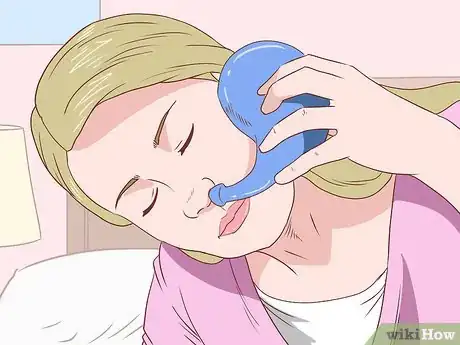
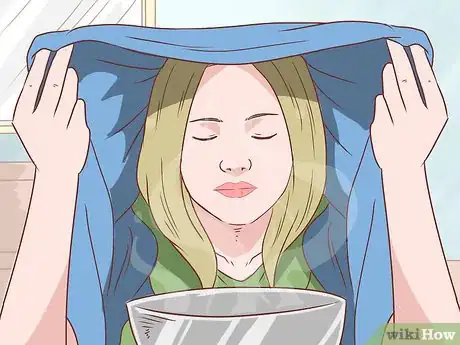






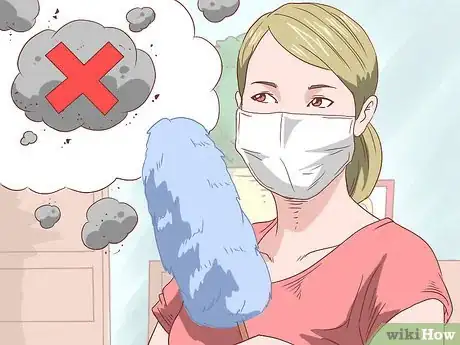

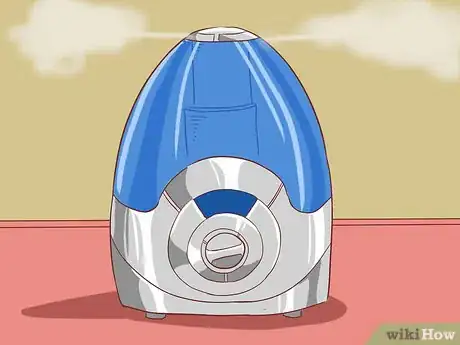

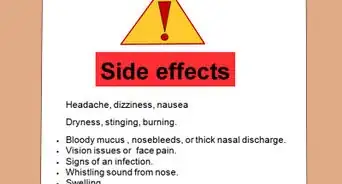


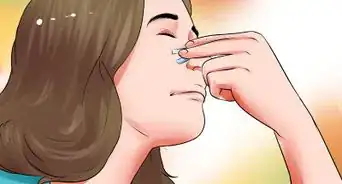

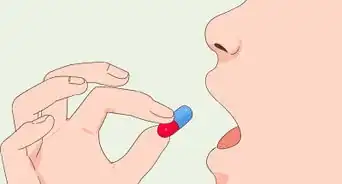















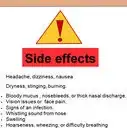





































Medical Disclaimer
The content of this article is not intended to be a substitute for professional medical advice, examination, diagnosis, or treatment. You should always contact your doctor or other qualified healthcare professional before starting, changing, or stopping any kind of health treatment.
Read More...